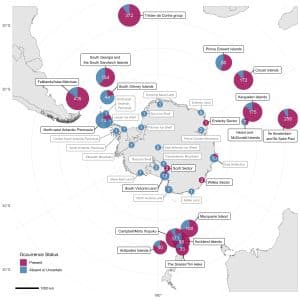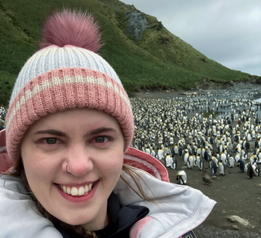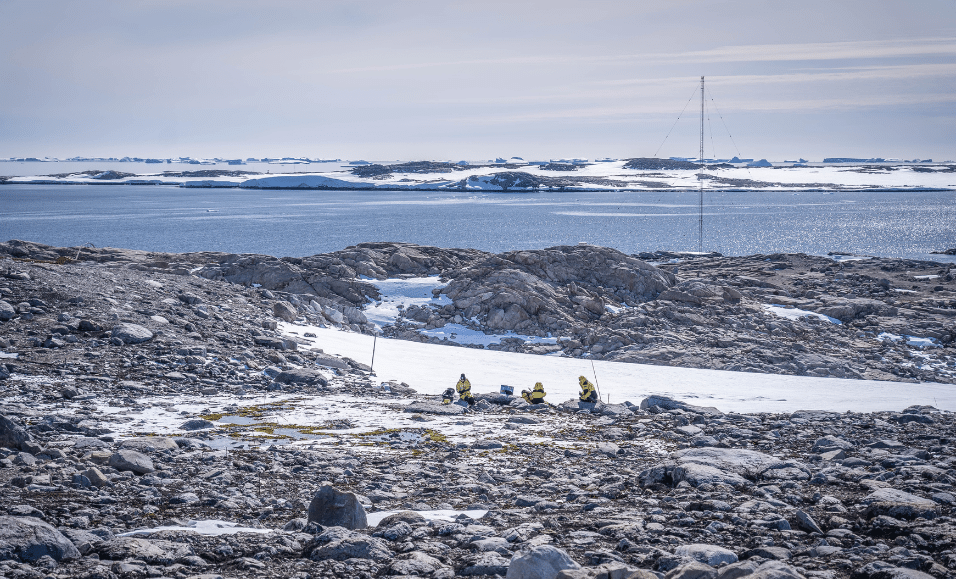Now available: First comprehensive inventory of alien species in the Antarctic region

Heard Island has experienced fewer alien species compared to other islands in the Southern Ocean. Credit: Steven Chown

The last sheep on Marion Island in 1978. Credit: Valdon Smith, Antarctic Legacy of South Africa Archive.

The last tree planted on Marion Island as part of an unsuccessful experiment to create wind-breaks in 1952. Credit: Nic Van der Merwe, Antarctic Legacy of South Africa Archive.
SAEF researchers have published the most complete and up-to-date dataset of introduced and invasive species in Antarctica and the sub-Antarctic islands. It offers evidence to help halt the rapidly growing risk of biological invasion in the region.
Until now, the Antarctic has been one of the few regions worldwide where open, centralised data has not been available.
Since the earliest expeditions to the region, humans have intentionally and accidentally introduced species. In Antarctica, few have become established due to the harsh climate and the early adoption of biosecurity practices. However, these barriers are expected to weaken under climate change and increased human visitation to the region.
Published in the Nature journal, Scientific Data, this research was a collaborative effort between scientists from Monash University, La Trobe University and the Arthur Rylah Institute.
Dr Rachel Leihy, from Monash University and the Arthur Rylah Institute and the lead author of the paper said that maintaining up-to-date lists of alien species is critical to monitoring and managing invasive species.
“Open datasets also need to use a common language and data standards to ensure they can be updated with new records, merged with other datasets, and understood by a range of end-users. This is especially important in places like Antarctica, where lots of different people, organisations and countries are responsible for managing Antarctic sites and the Southern Ocean Islands,” Dr Leihy said.
The team reviewed 3066 records of 1204 plants and animals in 36 locations across the region. The completed inventory provides information on the identity, localities, establishment, eradication status, dates of introduction, habitat, and impact of alien species. Plants and insects make up most records across the region.
It shows most alien species have been found on the sub-Antarctic islands (1125 species), while 135 alien species have been identified in Antarctica. Some of the reasons for the higher numbers on the islands are their comparatively milder climates, easier accessibility, histories of human settlement and greater research efforts.
The evidence indicates close to half the alien species are not having an invasive impact, and that ~13% are considered invasive.

Figure shows the number of alien species records across the region.
While alien species have had a relatively minor impact in Antarctica, on the sub-Antarctic islands, it’s a different story. Cats, rats, and mice have caused widespread losses to endemic seabirds and insects. Vegetation has been damaged by rabbits and plant communities have been transformed by invasive weeds.
Over the last century, attitudes have shifted in favour of protecting and restoring these unique environments and their biodiversity. The adoption in 1998 of the Protocol of Environmental Protection to the Antarctic Treaty has prohibited the introduction of all alien species (except under strict permit conditions) and brought about increased focus on biosecurity measures, eradication programs and conservation management plans.
However, in many cases, the success of these efforts has been difficult to determine due to the lack of centralised, accessible data available to researchers, policymakers, and environmental managers.
The data deficit is partly due to the region being managed as an international space through the Antarctic Treaty System which excludes it from the international agreements of the United Nations, such as the Convention on Biological Diversity. Meanwhile, the sub-Antarctic islands fall within a variety of national jurisdictions, each with their own approach to data collection and management.
This dataset collates all the existing records in the scientific literature and makes it available to researchers, policymakers and others seeking to prevent biological invasions in the region.
Dr Leihy says that the team have brought together these records to help support conservation decision-making.
“By including records for the broader Antarctic region and historical records of alien species that have since died out or been eradicated, we can track the spatial and temporal dynamics of introductions. This will allow us to understand the effectiveness of policies and management actions, and potentially identify new invaders that might pose a risk to Antarctic and Southern Ocean Island ecosystems,” Dr Leihy said.
Read more
Leihy, R.I., Peake, L., Clarke, D.A., Chown S.L. & McGeoch M.A. (2023) Introduced and invasive alien species of Antarctica and the Southern Ocean Islands. Scientific Data 10, 200. DOI: https://doi.org/10.1038/s41597-023-02113-2
Read Dr Leihy’s Behind the Paper in the Nature Portfolio Ecology & Evolution Community: https://ecoevocommunity.nature.com/posts/alien-species-in-antarctica-and-the-southern-ocean-islands
About the author
Anna Quinn
Anna is SAEF’s the Senior Communications Adviser.


